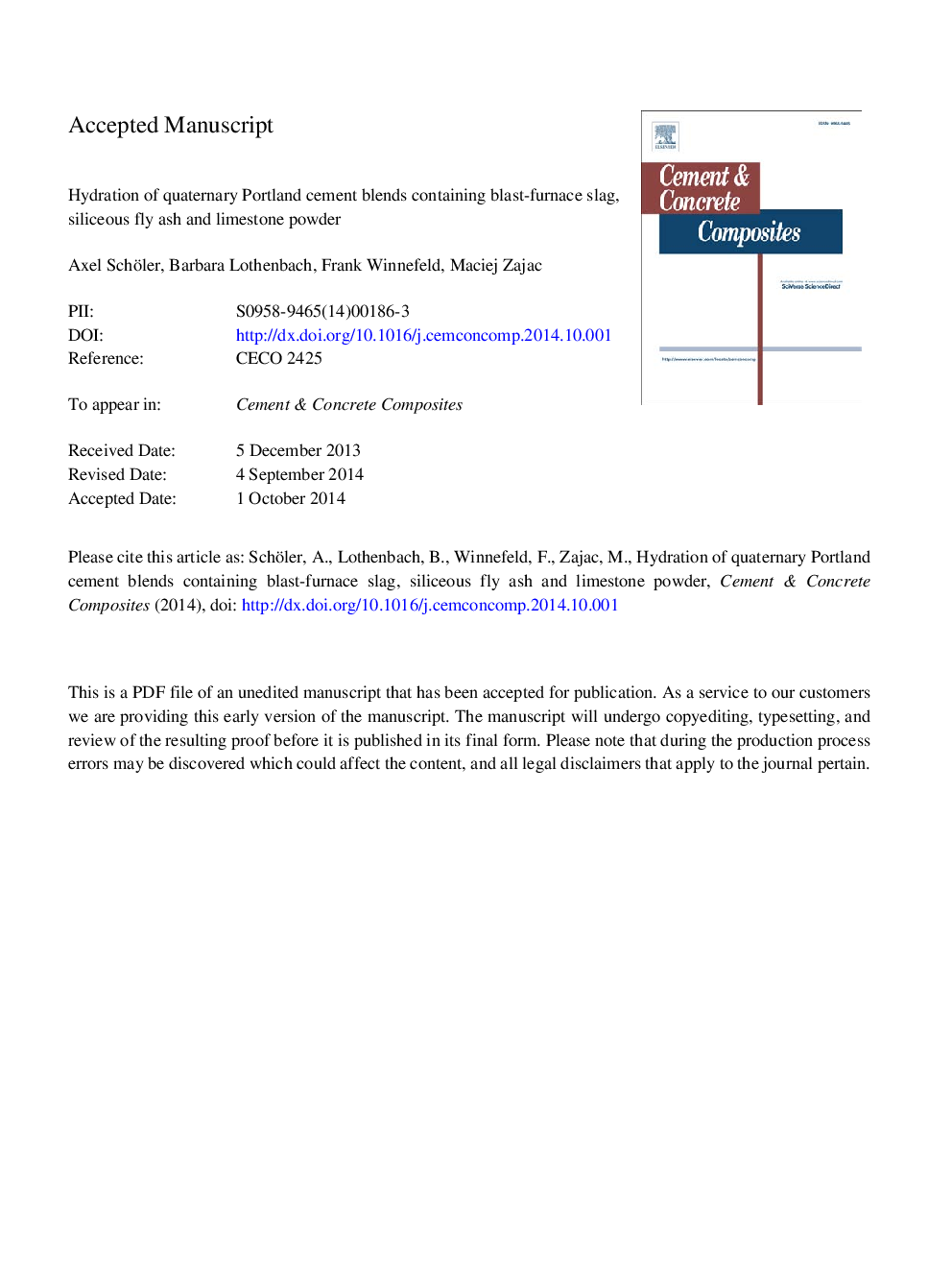| Article ID | Journal | Published Year | Pages | File Type |
|---|---|---|---|---|
| 7884373 | Cement and Concrete Composites | 2015 | 38 Pages |
Abstract
In this study the hydration of quaternary Portland cements containing blast-furnace slag, type V fly ash and limestone and the relationship between the types and contents of supplementary cementitious materials and the hydrate assemblage were investigated at ages of up to 182Â days using X-ray diffraction and thermogravimetric analysis. In addition thermodynamic modeling was used to calculate the total volume of hydrates. Two blast-furnace slag contents of 20 and 30Â wt.% were studied in blends containing fly ash and/or limestone at a cement replacement of 50Â wt.%. In all cases the experiments showed the presence of C-S-H, portlandite and ettringite. In samples without limestone, monosulfate was formed; in the presence of limestone monocarbonate was present instead. The addition of 5Â wt.% of limestone resulted in a higher compressive strength after 28Â days than observed for cements with lower or higher limestone content. Overall the presence of fly ash exerts little influence on the hydrate assemblage. The strength development reveals that amounts of up to 30Â wt.% fly ash can be used in quaternary cements without significant loss in compressive strength.
Related Topics
Physical Sciences and Engineering
Engineering
Industrial and Manufacturing Engineering
Authors
Axel Schöler, Barbara Lothenbach, Frank Winnefeld, Maciej Zajac,
